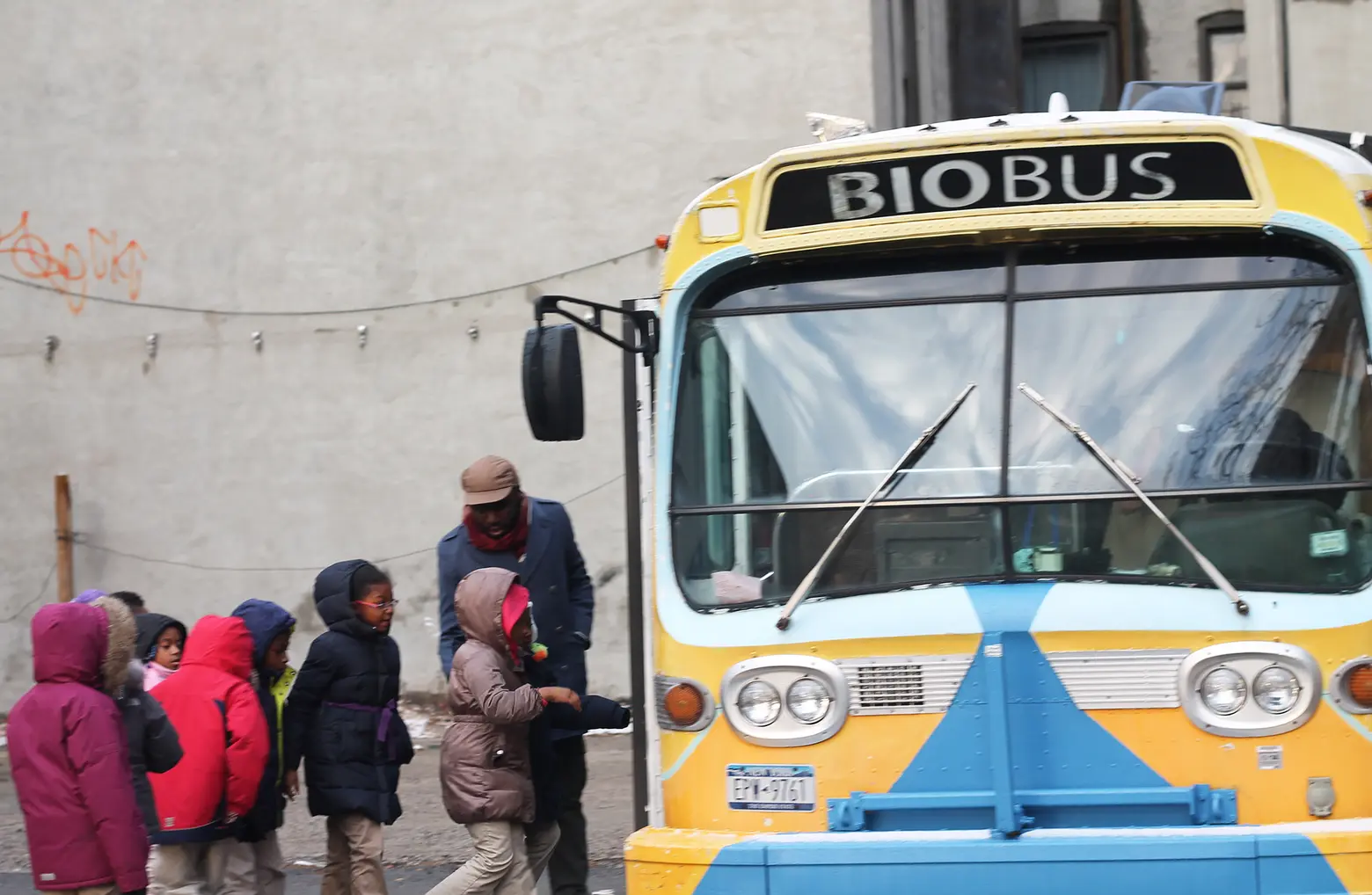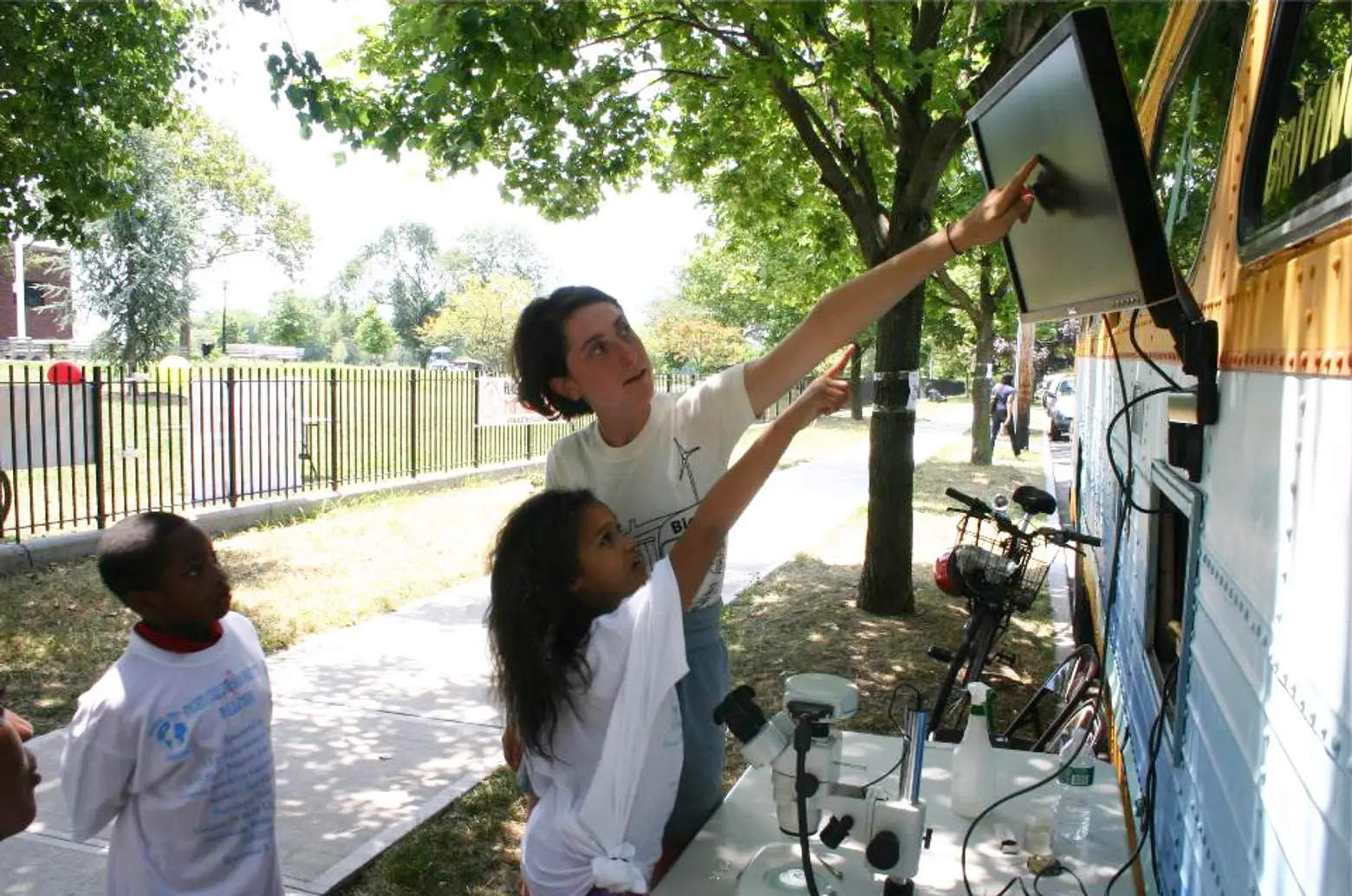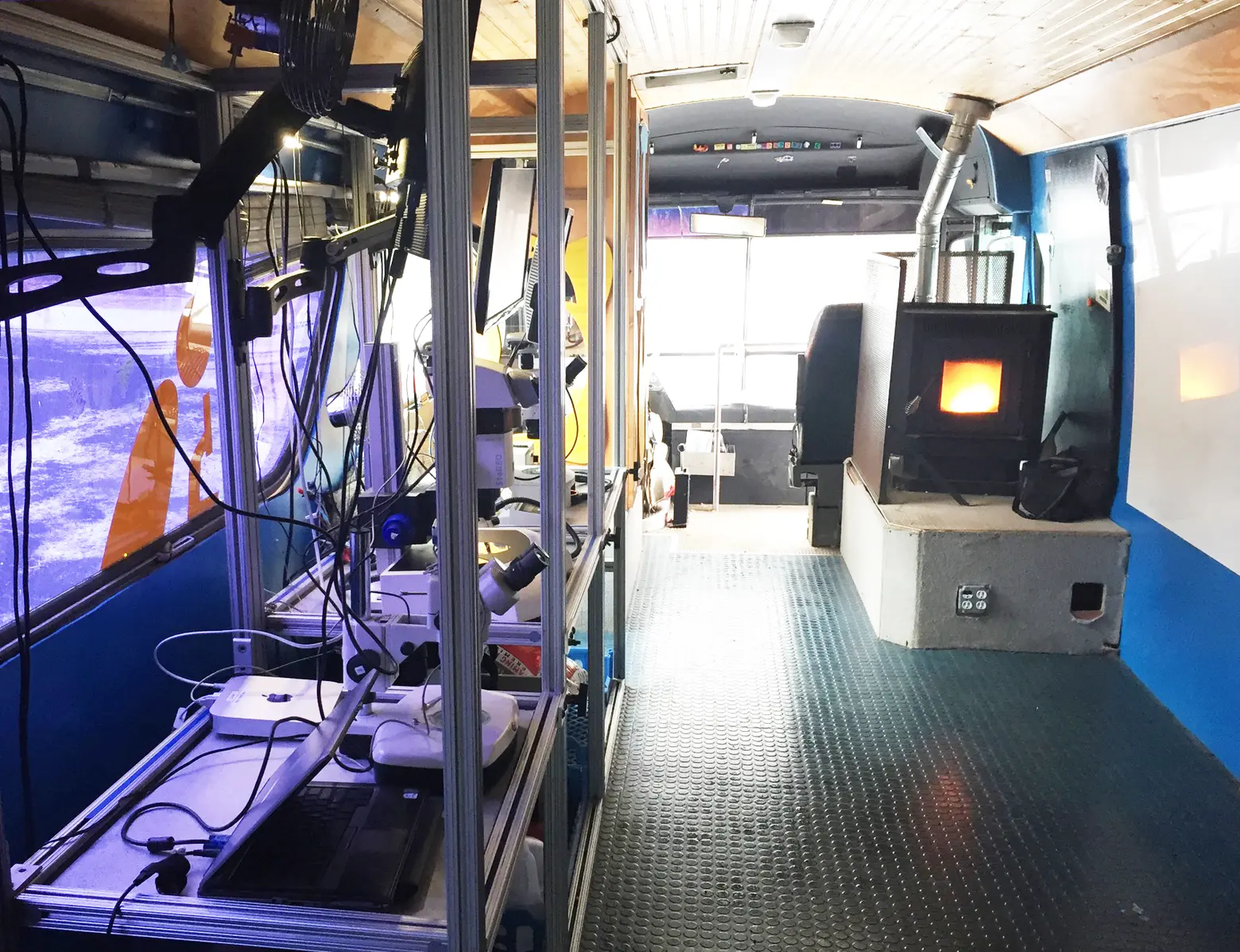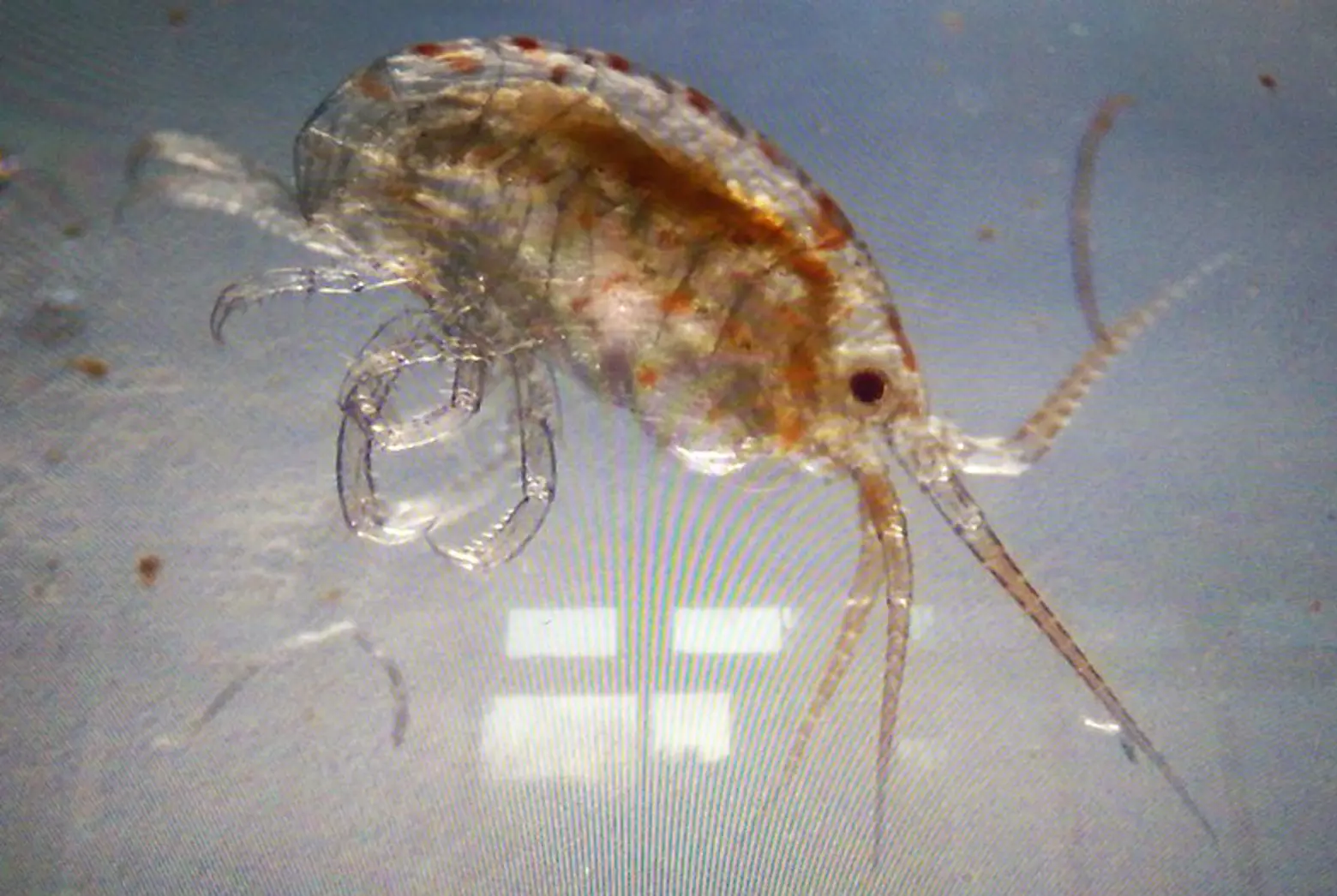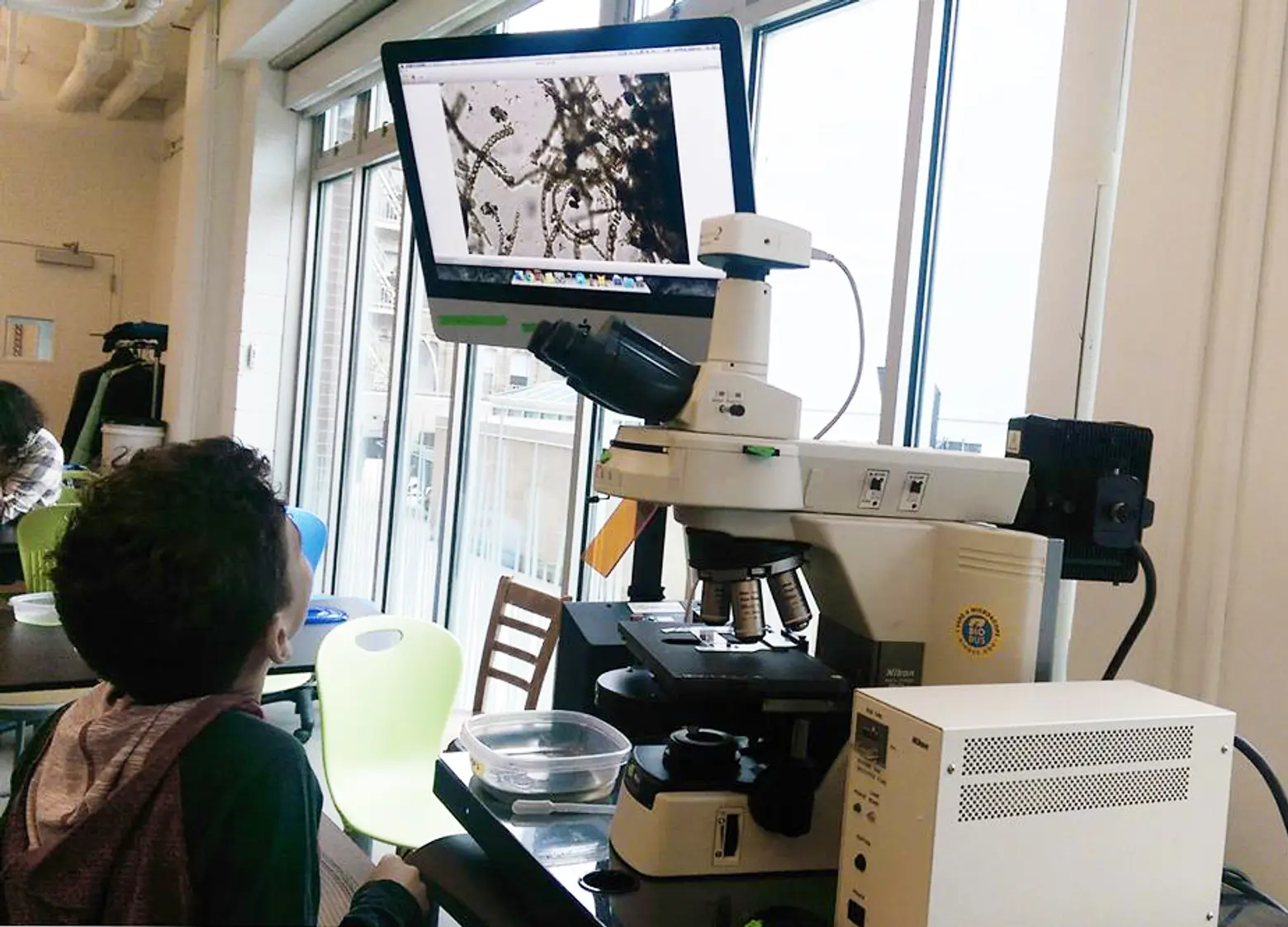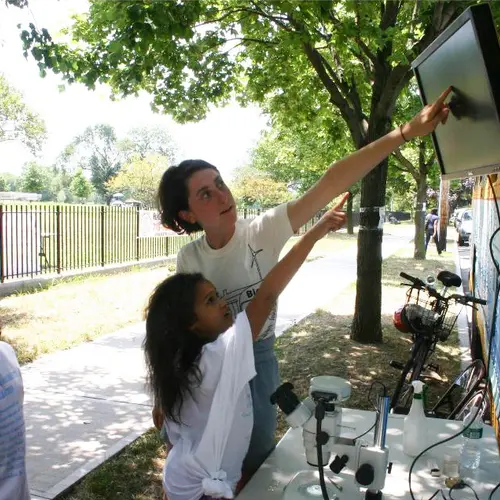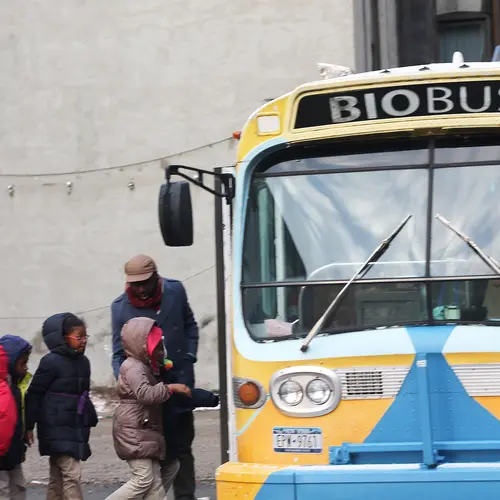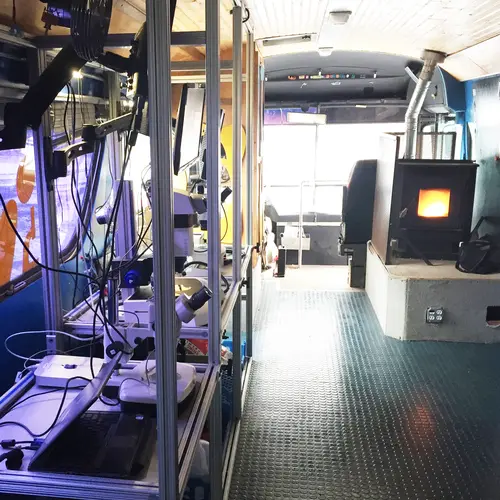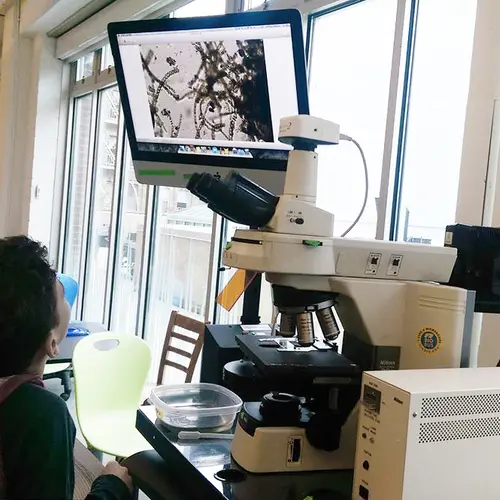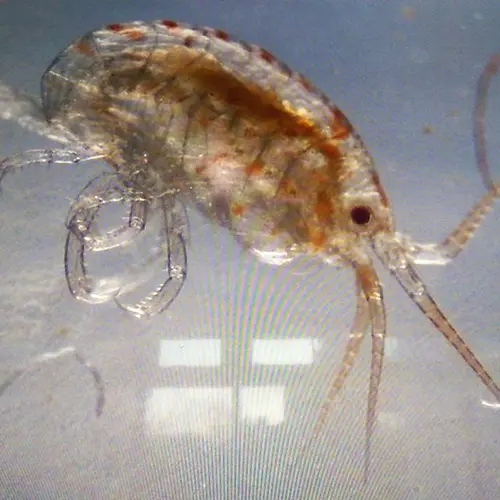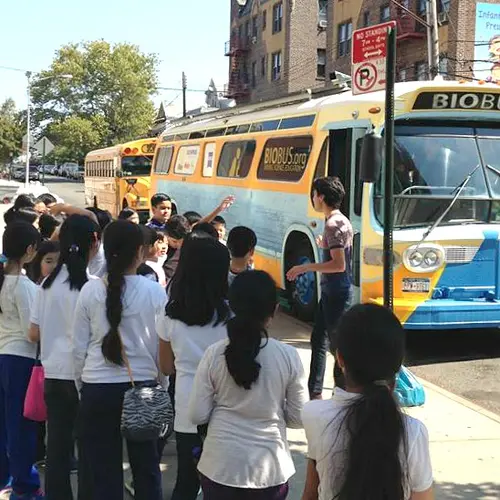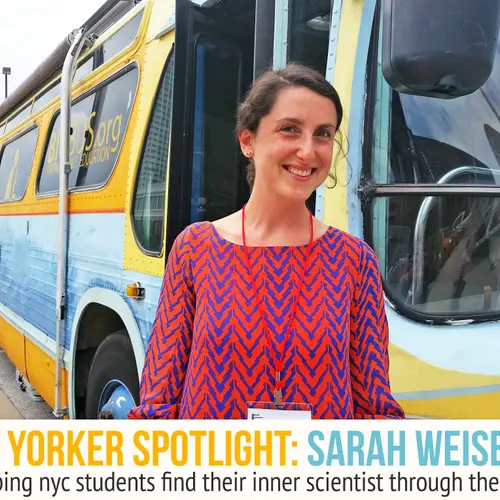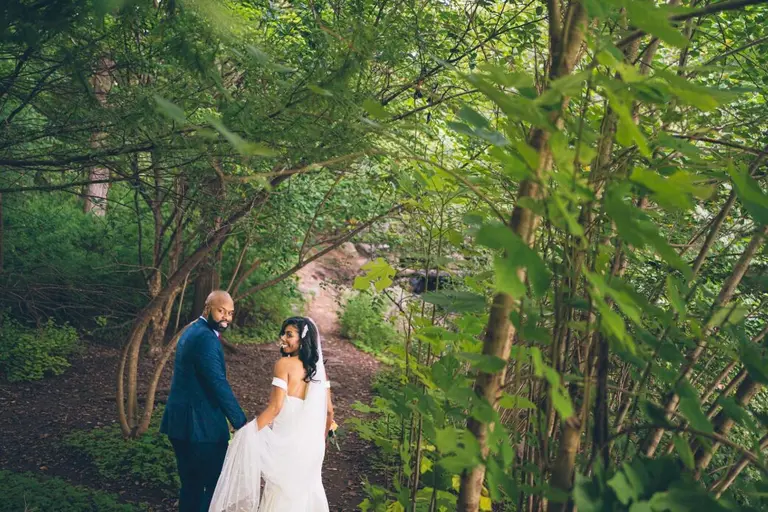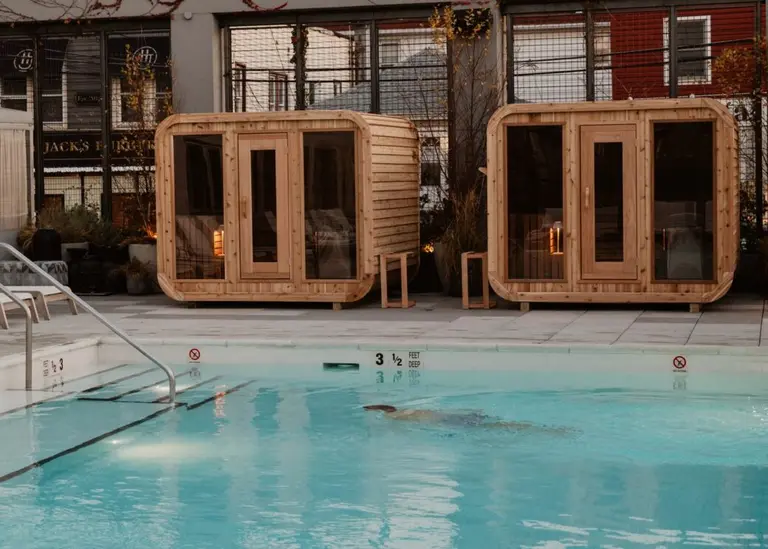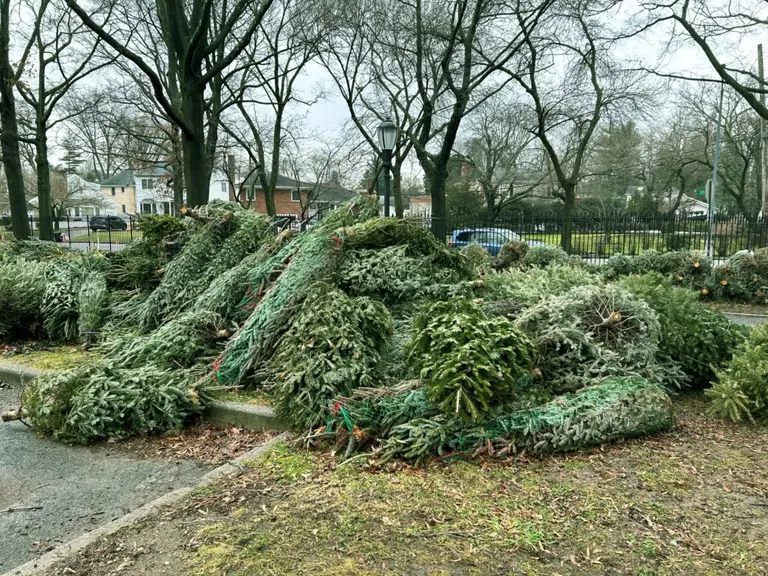Spotlight: BioBus’ Sarah Weisberg Helps NYC Students Find Their Inner Scientist
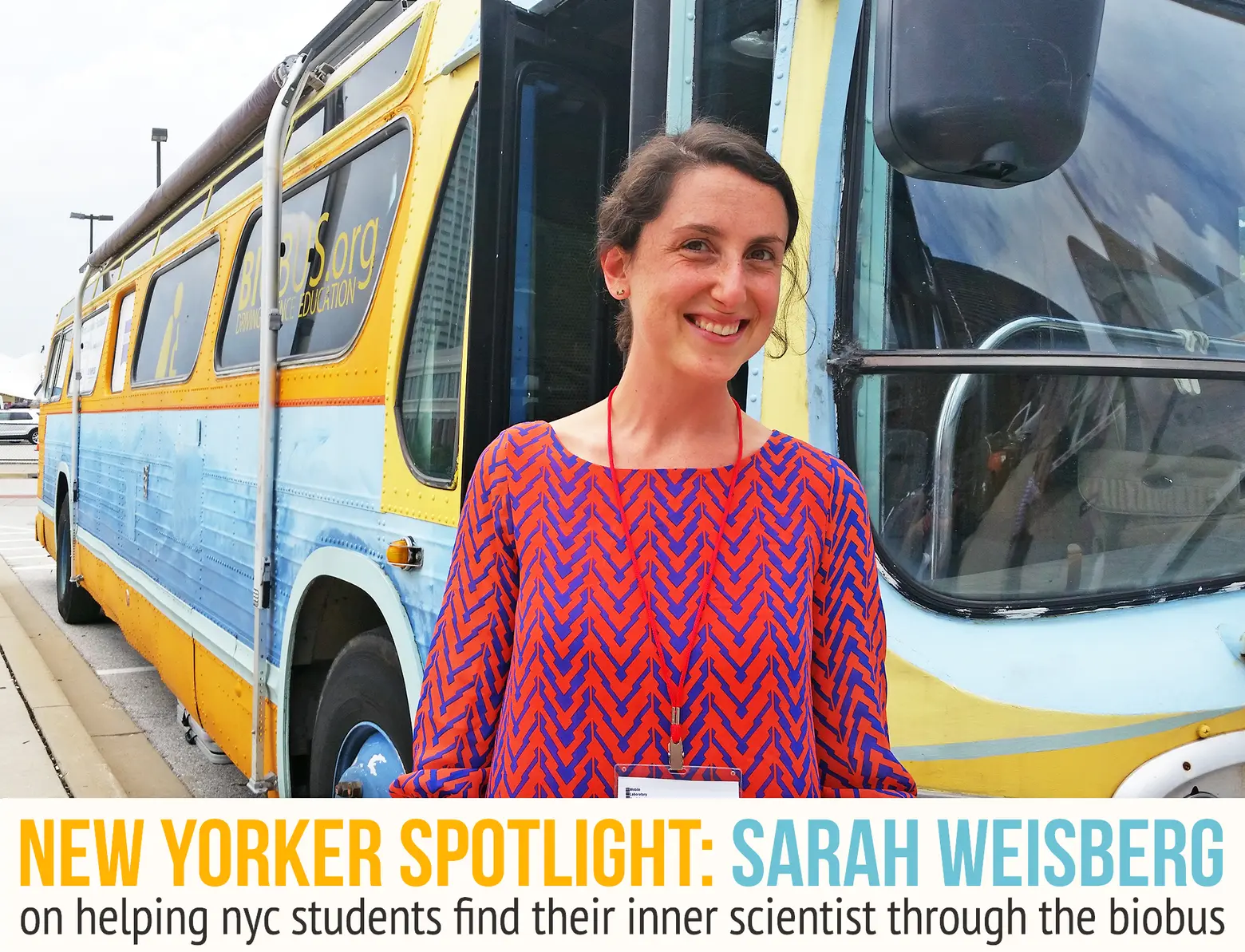
An early appreciation for science can lead to a lifelong passion for the subject, but it can be a challenge to get elementary, middle and high school students excited about the sciences from inside the classroom, which is where the BioBus comes in. The mobile science lab was founded in 2008 by Ben Dubin-Thaler, who has a PhD in Biology from Columbia University. The bus began “as an experiment to test his hypothesis that, given the opportunity to use research-microscopes to perform live experiments, anyone would be excited about science.” To test his hypothesis, he purchased a bus on Craigslist and transformed it into a mobile laboratory equipped with state-of-the-art microscopes that could travel to students. The bus now serves thousands of New York City students and has a sister in the BioBase, located at the Lower East Side Girls Club, a hub created so that bus’s lessons can be expanded upon through additional programming.
BioBus’s Chief Scientist Sarah Weisberg is a great example of what’s possible with careers in science. While she originally envisioned working in academia as a researcher, she found her passion for science programming and advocacy through BioBus. She is now hard at work growing the organization and its mission of presenting science in a fun, accessible way to children. 6sqft recently spoke with Sarah to learn more about the BioBus and how it’s helping young New Yorkers discover their inner scientists.
When did you realize you loved science?
When I was growing up, the obvious career path if you were good at science was to be a doctor. So I thought I was going to be pre-med, but when I was in college I took a class called Experimental Neuroscience, which was a hands-on, experiment-based class where we had to learn how to think through what an experiment means and how to design one. It was a way of thinking that totally opened up my mind. I wasn’t just receiving facts anymore, but I was realizing where those ideas and concepts were coming from, so I started doing more work in research labs after that.
How did you go from this change in thinking about science to hopping on board the BioBus?
I was on track to go to a PhD program at the University of California San Francisco, and I was excited about a career in academic science, but it was difficult for me to communicate to people outside of my immediate field about what I was doing, why it was exciting and important. I was also aware of the fact I was privileged to be in a situation where I could have access to that kind of scientific experience and that way of thinking and the career opportunities that come along with it. And so from both trying to figure out how to solve some of the communication issues and also an interest in the social justice component, I started looking for what was out there that would help me see how other people were tackling those problems. I didn’t expect it necessarily to turn into my career at that point. I just googled “biology teaching, volunteer, New York City,” and the BioBus came up, which to me is still amazing because at that point it was a one-man show. At that point I started volunteering and was totally blown away. I deferred my PhD program once, then again, and eventually I realized I probably wasn’t going anywhere soon.
What is the driving force behind the BioBus?
From the beginning, we had research-grade tools and it became apparent that was what mattered the most. Giving people, especially younger people, hands-on access to these tools was an incredibly empowering experience for them. We started reaching out to teachers and explaining that we have this resource and asking if we could come to their school. It started small with a cohort of teachers who knew us in one way or another, and now seven years later, we’re fully booked every single day of the school year with a waiting list. That’s the big reason why we’re building the second bus because we’ve seen the level of demand.
Why does science on wheels make sense for New York City?
By moving around in a very small area, we’re able to see over 30,000 people a year on one bus. In addition to bringing people in, we’re able to go out to communities in farther flung areas of Brooklyn, Queens, the Bronx and Staten Island that don’t necessarily have access to some of the resources that the city has to offer. I think about it a lot actually because we live, of course, in an incredibly dense environment where we have desperate levels of access, and locations are geographically very close to each other. I’ve been at schools in Harlem, for example, that don’t know about Columbia University. The kids wouldn’t have a picture of it in their minds even though it’s half a mile away. We can take the resources to them by having it on wheels and then once we bring them directly to them, we can also encourage them to take advantage of other resources.
Why do these students benefit from additional exposure to science?
We spend about 70% of our work with schools that serve low-income communities. Students in those neighborhoods are otherwise less likely to have access to hands-on science resources and scientific mentors, and they’re less likely to know scientists within their community.
It’s very well documented that hands-on and inquiry-based learning – where the student’s curiosity is the driving force behind the lesson or experience – is more effective than lecture-based learning. But science teachers are typically not trained as scientists. It’s hard for anybody to design a really good experiment with an open-ended yet structured and logical approach, but it’s especially hard to ask teachers when they haven’t been trained in that thinking. Part of what we do, especially in the teacher training, is to try to make them more comfortable with that and provide examples that also end up enhancing their students’ understanding of the material. Every lesson and activity we do ties into the city and state science curriculum in very explicit ways. It’s more about how to to actually implement what’s already considered to be best practices in science education. It’s not upending the classroom; it’s supplementing and supporting. One other reason I think we’ve had a positive effect is that the type of microscopes we have, it doesn’t make sense for any individual school to purchase that level of equipment.
Can you describe what it’s like when kids board the bus?
We pull up in front of the school. It’s a brightly colored, vintage transit bus. The first thing we point out is that there are solar panels on the rooftop of the bus that create all the electricity we use to power the lab. A class of up to 35 students comes out and they get to board the bus. We often look at a small crustacean called Daphnia, which is local to New York. We find it in Central Park, in ponds, in lakes. I actually found it in a puddle on Friday. It’s a small crustacean, about 1-5 millimeters long, and it’s transparent on the outside, so we show kids how to examine it using the microscopes. They get to use the controls of the microscope, take photos and print them, catch videos and try to understand that animal; it’s anatomy, it’s organs, they can see its heart beating, its eye moving, they can see embryos developing inside of it. They try to understand how it works as it relates to what they already know about biology. In the back of the bus, we are able to have a discussion with them about what they’ve seen and the questions that it’s inspired them to ask, and we also introduce them to some more complicated microscopes, so they can magnify that same Daphnia up to 30,000 times to see structures a lot smaller, including individual bacteria. I’ll say that almost all the times students leave with more questions than we have time to answer, which is a really good thing.
After hopping on board, how many students later join BioBase?
We did a pilot study earlier this year where we brought the bus to four schools that were very near to BioBase to try and focus on what happens when you specifically go to a school near a BioBase site. We told all the students that we were starting a BioBase class six weeks after their visit studying the ecology of the East River. We had 42 students express interest, and we only had 15 spots in the class. It was pretty amazing and way more than we had expected.
We’re setting up a second BioBase in collaboration with Columbia University, so we can go to those same schools in Harlem where students had no idea Columbia University existed, but because it’s a few blocks away they can come. We’ve been mulling over what the ideal ratio is. There’s a lot of interest both from schools and community groups around the city, so we are taking it one step at a time.
How can society help more children fall in love with science?
I think that we need to put as many resources as we can towards any kind of program that takes into account what we know works in science and science education and realize that there are a lot of different levels of need. We know that letting young people realize they can use their own interest as drivers for their careers and futures is very powerful, and finding ways to mentor that process has been well documented to be very important. Everybody on our team likes to talk about their own personal stories because we want to be role models.
+++
Clik here to learn more about BioBus’ programming or here if you are interested in donating.
[This interview has been edited]
RELATED:
- New Yorker Spotlight: Carter Emmart Brings Us Aboard His ‘Starship’ at the Museum of Natural History
- New Yorker Spotlight: Sue Chin on Designing for a Very Different Type of Client at the Wildlife Conservation Society
- New Yorker Spotlight: Paleontologist Mark Norell Spends His Days with Dinosaurs at the Museum of Natural History
